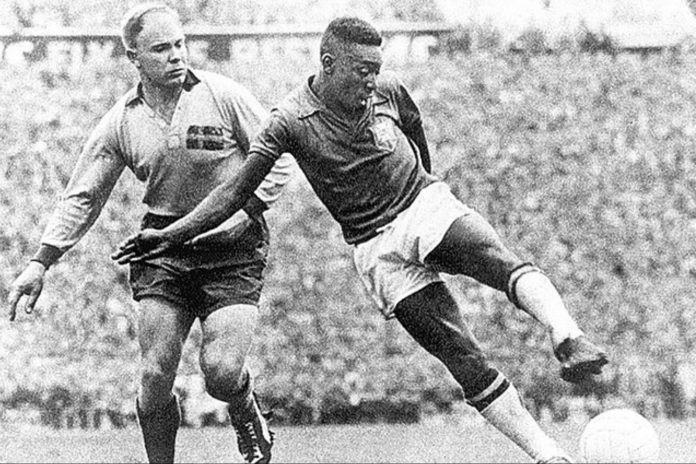He initially only appears in pictures. The name begins to appear in newspapers and magazines in 1970 for a 10-year-old “middle-class” Calcutta boy. The photos are black and white in the English daily and the sports weekly and coloured in the weekly magazine.
There are two different types of photos: posed and candid. The majority of action scenes have him constantly carrying the ball, as if it were a pet he brought to the gathering. Other adult guys wearing half-pants are naively, and occasionally violently, attempting to take it away from him. The football itself can change shapes in the year 1970. Footballs in India are still made of extended leather chom-choms globed together from earlier periods, whilst the cricket ball appears to have not evolved at all.
The ball is a white, hazy object in all of the monochrome photographs of the gangly youngster during his first World Cup. The chom-choms of yore have flattened into a stitch pattern to produce a smoother orb in the first colour photographs of a World Cup, taken in Chile in 1962.
We first learn of the iconic “Telstar,” with its tessellation of white hexagons and black pentagons, in the run-up to Mexico 1970. So throughout the years, this colour scheme becomes the norm: a canary yellow jersey with green accents, blue shorts, and a ball that remains in black and white throughout all the colour film and photos. Dark brown limbs that are frozen in graphic poetry are the result when you combine that with the most famous man to don the Brazil kit.
The name itself nearly seems to have been created to be pronounced differently across languages. Pele has just two easy-to-understand syllables and no unnecessary consonant at the end. The stress is on the second syllable, pe-ley, but for the longest time he is referred to as Pele, which is similar to the Bangla variant for “get,” peley. Later, when you hear him speak it on TV or when other Brazilians refer to him, you realise that this is the case.
The name becomes more well-known as the 1970 World Cup progresses. Kids like me start to realise that this black man, a non-gora, is vastly superior to everyone else in the world.
Hitler’s bigoted policies toward race were shaken by Jesse Owens at the 1936 Berlin Olympics. More recently, a black American man named Cassius Clay, who later changed his name to Muhammad Ali, has emerged as the phenomenon who governs boxing.














